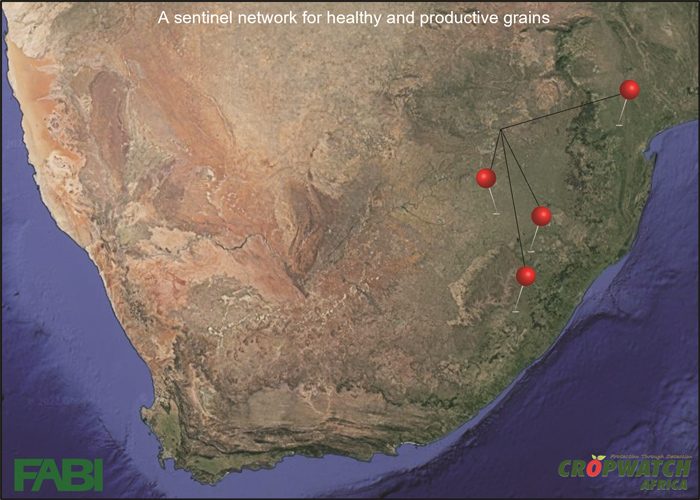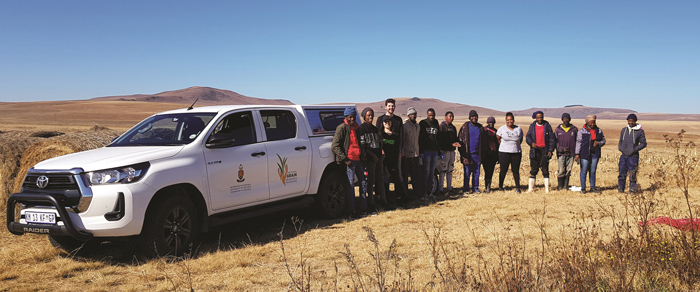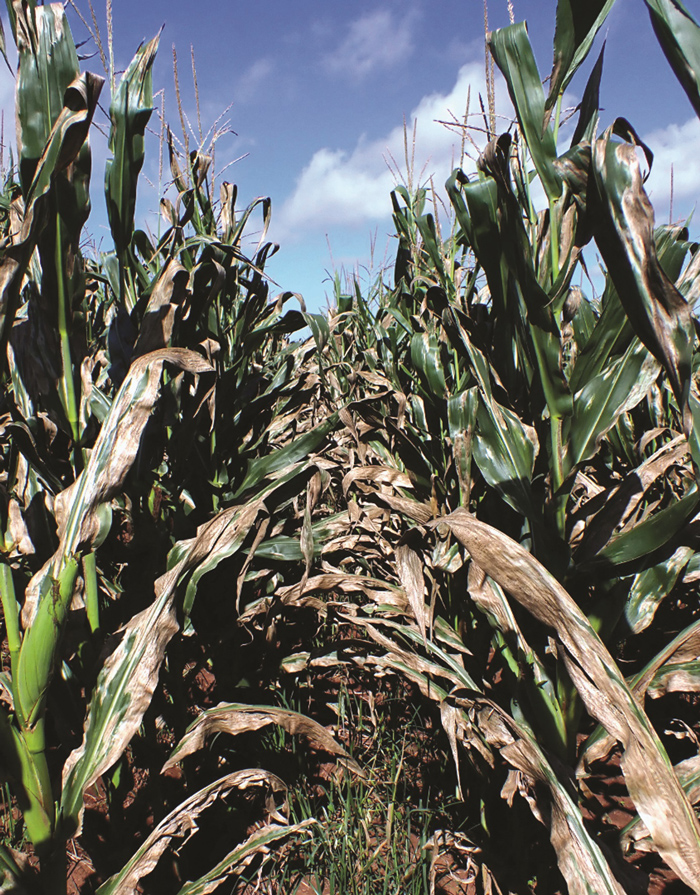
Prof Bernard Slippers, director of FABI, University of Pretoria

Leandri Klynsmith,
FABI, University of Pretoria

Cobus M. Visagie,
FABI, University of Pretoria

David Read,
FABI, University of Pretoria
Plant pests and pathogens are seldom regarded as agents of human demise. However, by killing plants a ripple effect is created which ends in less food and less nutrition for the constantly growing human population. Management of agricultural pests and pathogens is therefore vital, but it is becoming increasingly difficult. This is due to the rapid changes in the distribution and divergence of pests and pathogens along with changing climatic conditions.
Insect resistance to Bt toxins expressed in grains is but one example of the threats faced by the agricultural sector. Changes in the distribution and frequency of known instances of insecticide resistance and the emergence of new resistance are not only predictable, but inevitable and important to monitor.
Similarly, continued investigation of fungicide resistance, race diversification and dispersal of agricultural pathogens is required to stay ahead of current and emerging threats. At the centre of this could be sentinel plots. A sentinel plot is planted with the goal of serving as a surveillance tool for routine monitoring for the presence of pests or pathogens of a specific crop plant.
Surveillance of sentinel plots
Standard management procedures for the region and seed source (for example refugia) are always followed for responsible use of sentinel plots. Regular surveillance of sentinel plots informs researchers when collection trips are required. Once insect or pathogen infestations are recorded, collection trips follow soon after.
Even though sentinel plots are not treated with insecticides or fungicides, infestation levels deemed to be of risk to surrounding fields (for example high levels of early infestation and the potential for high levels of a second generation emerging from the field) initiate the application of an appropriate treatment (pesticide treatment, crop removal or destruction). Because sentinel plot research is done in collaboration with local producers, there is the added advantage of continuous feedback on regional outbreaks and environmental changes.

Resistance management strategies
Population genetic studies used to investigate diversity and population structures of pests and pathogens can be used to predict the spread and dispersal pathways of resistance traits so that effective resistance management strategies can be implemented. Gene-editing technology provides not only a way to identify resistance-conferring genes, but also enables a novel and accurate management strategy by reversing resistance in pests or pathogens. Information from such studies also enriches crop breeding programmes. However, a reliable collection of pests and pathogens for research, resistance monitoring, and screening of new industry crop varieties is required on a continuous basis to prevent stagnation in the research and development (R&D) process. Depending on word-of-mouth reports of pest and pathogen infestations and crop husbandry is notoriously unreliable for surveillance and collection efforts of pests and pathogens.
Since 2019 researchers at the Forestry and Agricultural Biotechnology Institute (FABI) in association with the National Grain Research Programme (NGRP) conducted extensive surveillance of fungal and viral pathogens and insect pests across South Africa. In the 2021/2022 season they also piloted two sentinel plots, one in Mpumalanga and one in the Eastern Cape. These sentinel plots, as dependable sites of known crop cultivars and crop management, proved invaluable to surveillance and sample collections that feed back to research and management efforts.

Resistance screening
Insect collections from the 2021/2022 sentinel plots have already translated into the establishment of insect-rearing colonies for three major lepidopteran pests (African stalk borer, fall armyworm and spotted stem borer). This has enabled resistance screening and investigation of the genetic basis of resistance in the African stalk borer and fall armyworm. The sentinel plots have also been used as a surveillance tool for ensuring that the South African maize industry remains free of maize chlorotic mottle virus (MCMV), which is a component of maize lethal necrosis disease. Additionally, previously unreported viruses of sunflower have been detected within the sentinel plots, contributing significantly to the understanding of the virology of this crop.
For the coming seasons FABI, along with support from the NGRP and industry partners, aims to fortify the use of sentinel plots across various regions of South Africa. A sentinel plot network will serve national biosecurity needs and be a resource for research and development for everyone involved.






























